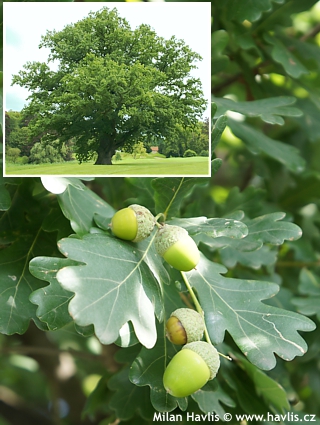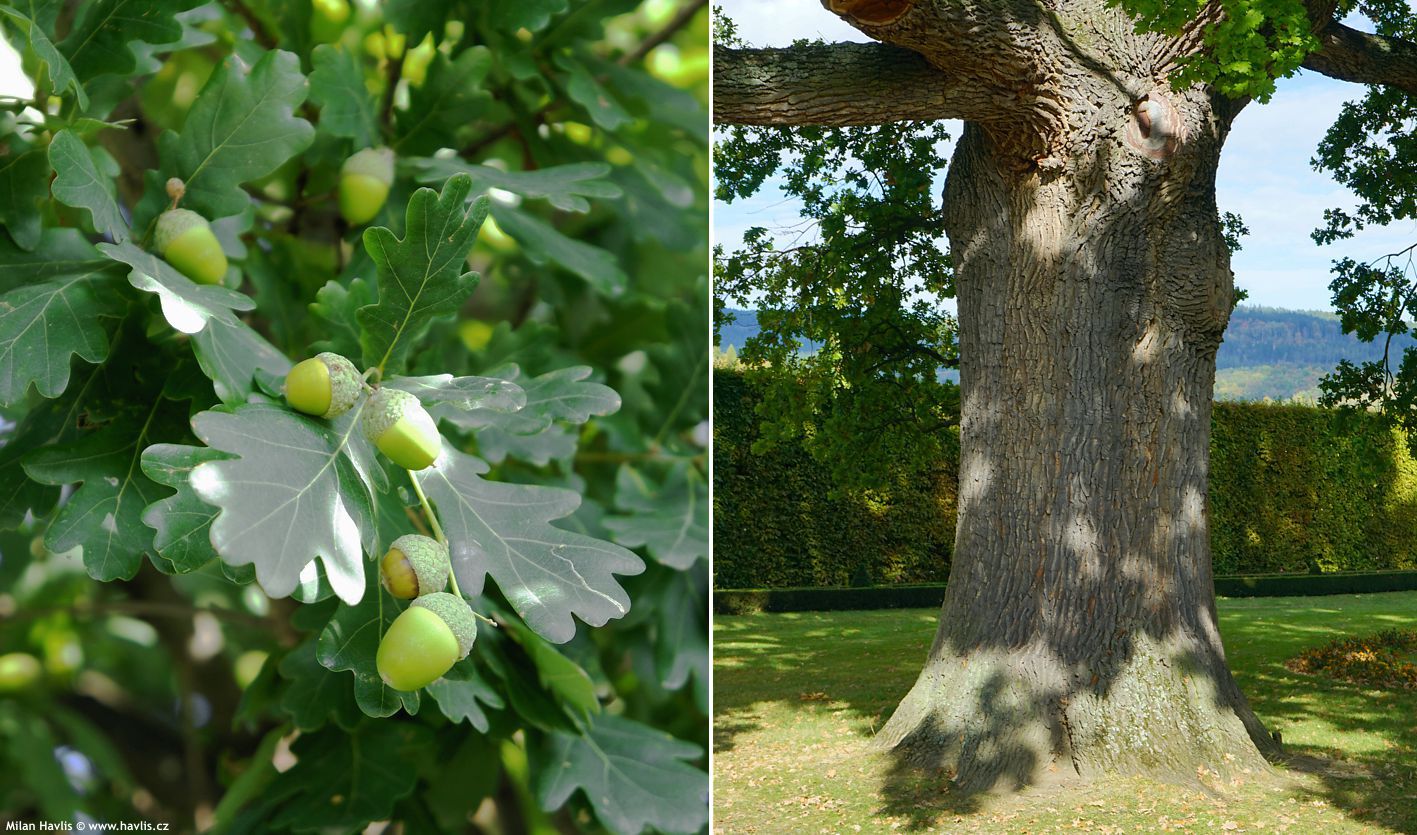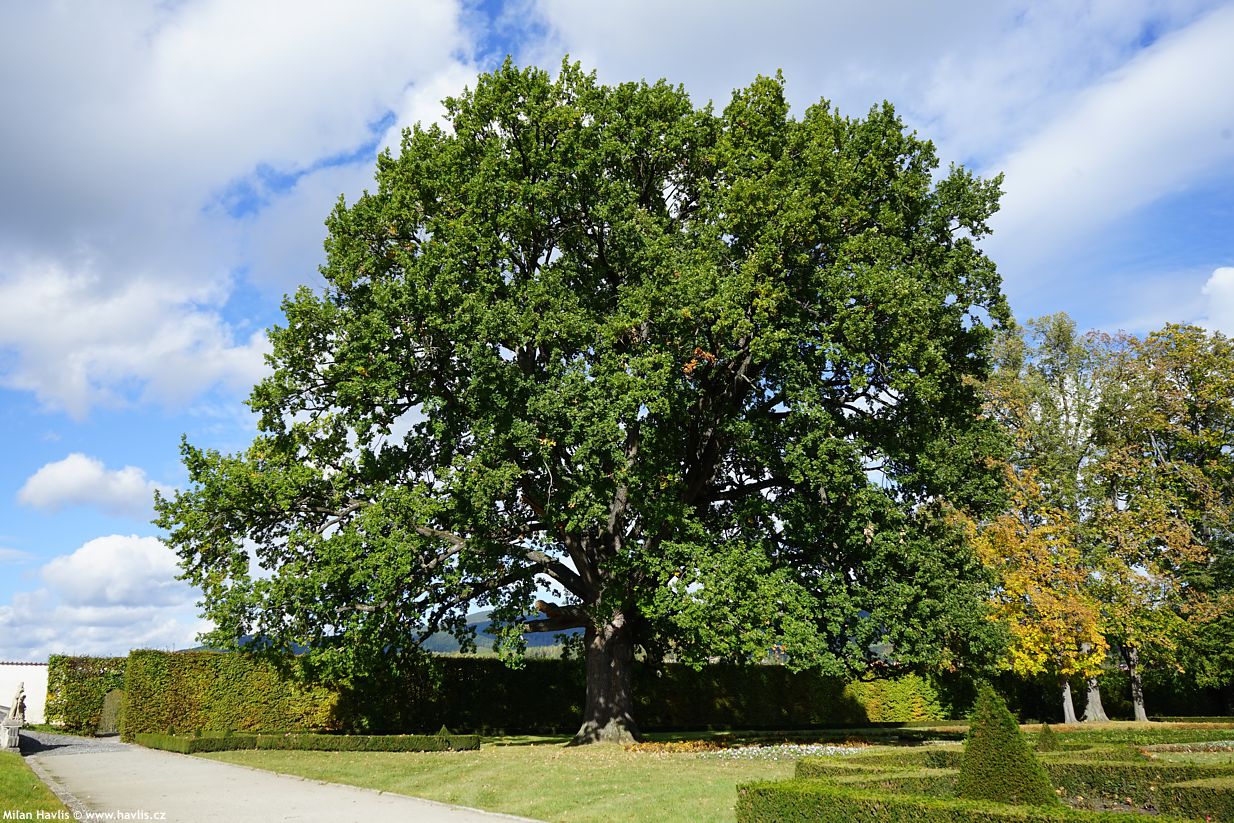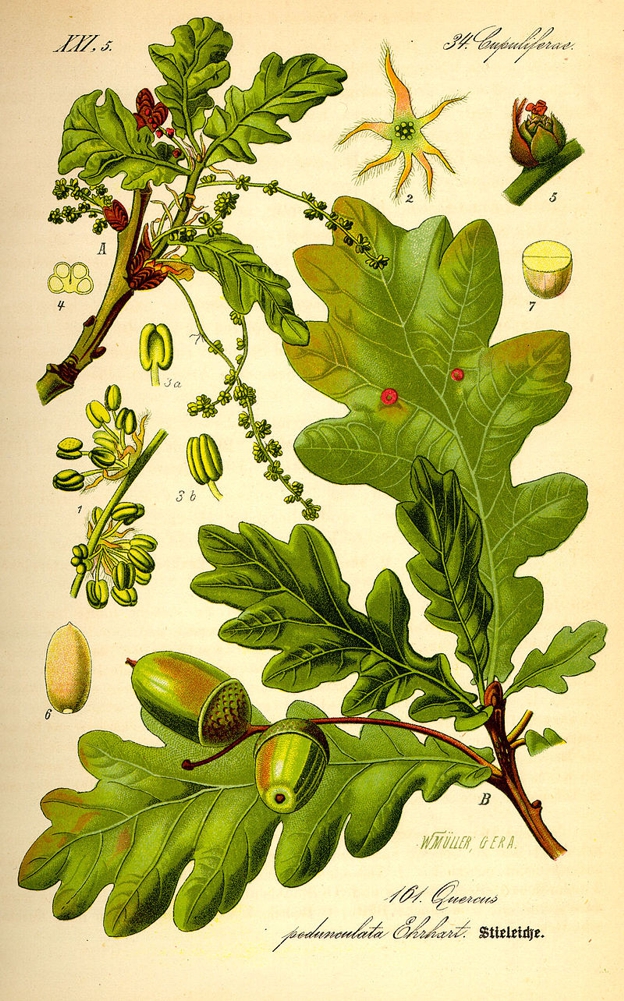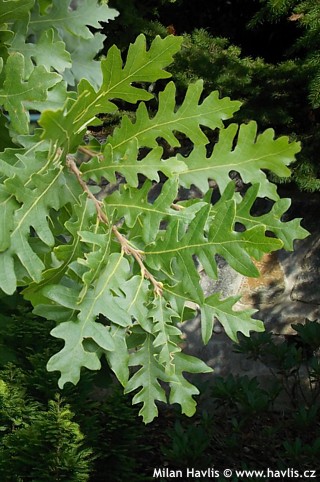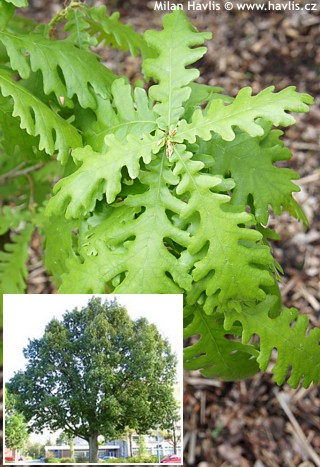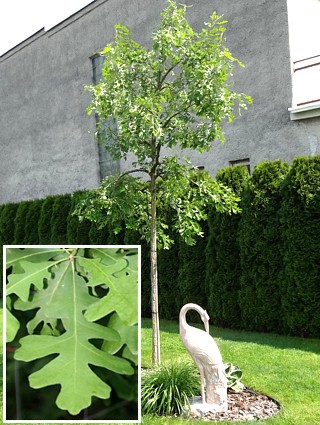Quercus robur English oak
Oaks are common trees of our natural woodlands. They border our ponds, occur naturally in our mixed forests, and make magnificent specimen trees in our parks and arboretums where less common species or rare varieties can be seen. English oak and sessile oak are the most common species of the Czech Republic. They are very similar and quite difficult to differentiate without fruit.
English oak is a large tree for open landscapes. It grows slowly but is long lived and cane form a massive specimen given time. It makes picturesque, curved branches whose silhouette is often used in eerie fairy tales. Bark is deeply furrowed, dark grey, very firm. Deciduous leaves are partly leathery, medium green, shallowly lobed, and appear clustered along the branch tips. They are lately prone to powdery mildew in summer but the tree often makes another portion of new foliage at the end of summer which will salvage its beauty. Flowers are short catkins, they appear in May and are followed by elongated acorns loved by boars.
Annual growth seldom exceeds 30 cm and is commonly shorter. The canopy is rather thin yet beautiful and offers a dappled shade. Its shape is narrowly pyramidal when young, changing to broadly rounded with age. It can take any type of pruning to achieve a desired shape or to control its size, but the tree will most certainly escape one day.
Oaks are not fussy about soil type, they can take anything from slightly alkaline to slightly acidic conditions which they prefer. They do well in well-drained soil, moist is good but boggy is fatal. Once established they withstand drought and city pollution. Newly planted trees need to be staked for 2-3 years to establish. Its robust, shallow roots may heave paving. Fully hardy to min. -30°C (USDA zone 5), and very likely a little more.
Last update 24-02-2020

3 816 Kè

5 013 Kè

7 002 Kè
Goods are shipped all over Europe. For Russia and U.K. and for further details please read about SHIPPING OPTIONS HERE.
Are you interested in a serious discount for orders NOV-FEB? Check your options here.
THE PRICES INCLUDE VAT of 15%. For quick conversion you can use 1 CZK = approx. 0.04 EUR
- STANDARD QUALITY - Plants of this group are 1st class quality with number of branches and overall density adequate to their size and age, considering they were container grown.
- DE LUXE QUALITY - This label guarantees a luxurious quality of manually selected plants that, compared to their height and age, are exceptionally dense and beautiful.
- EXTRA - These plants are usually mature and bigger specimens with exceptional overall appearance.
- STANDARD (as described in the plant form) means a tree with a trunk of 190-210 cm and a crown at the top, unless specified differently. The commercial size for trees is their girth measured in the height of 1m from ground.
- HOBBY - These plants are of the same quality as our standard-quality plants but younger and therefore cheaper.
- SHRUB - a woody plant with branches growing bushy from the ground level.
- HALF-STANDARD or MINI-STANDARD - a small tree with shorter trunk, its size is usually specified.
- FEATHERED - These are trees with branches growing already from the base of the trunk and up along the stem.
- GRASSES and PERENNIALS - Sizes given usually read the diameter of the pot or the clump, as specified.

































